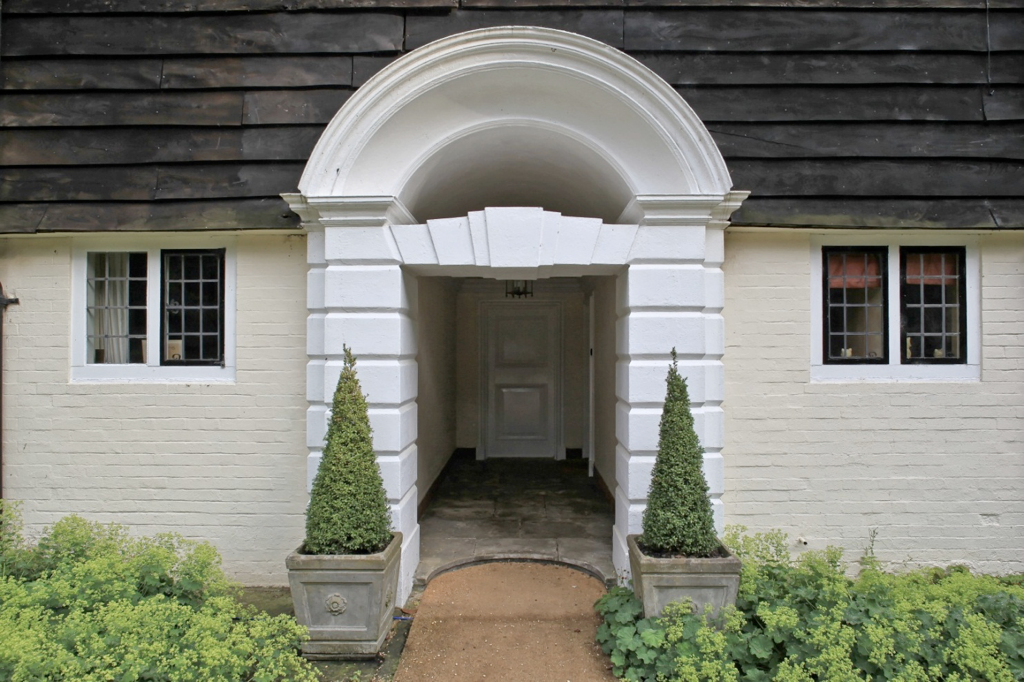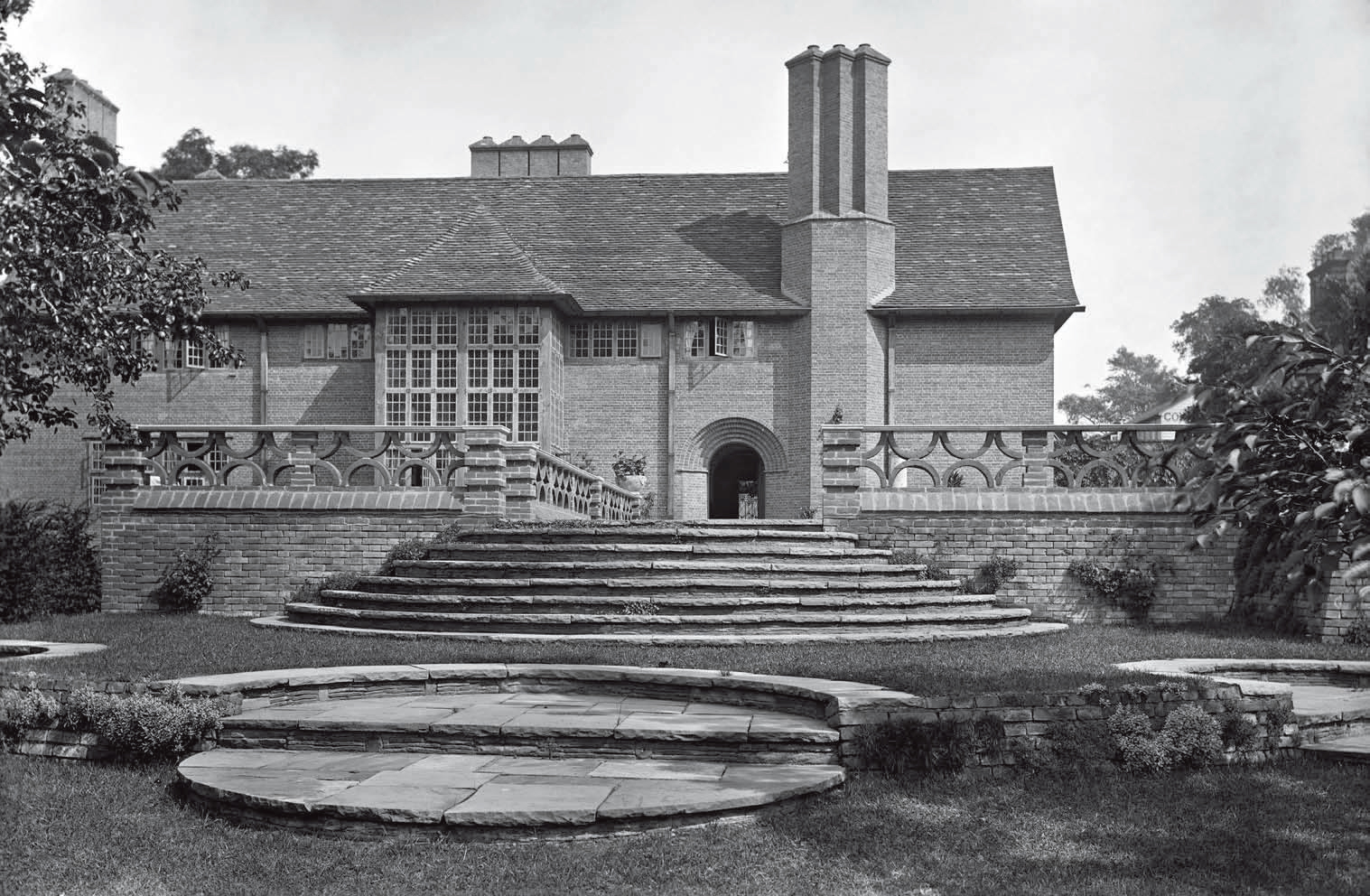
Ten Years On Lutyens Exhibition Images of Heathcote, Ilkley, W Yorkshire English
Sir Edwin Landseer Lutyens OM KCIE PRA FRIBA ( / ˈlʌtjənz / LUT-yənz; 29 March 1869 - 1 January 1944 [2]) was an English architect known for imaginatively adapting traditional architectural styles to the requirements of his era. He designed many English country houses, war memorials and public buildings.

Munstead Wood, built 18967 by Edwin Lutyens for Gertrude Jekyll. English Architecture, London
Edwin Lutyens - Key English Building. Castle Drogo, Drewsteignton, nr Exeter, Devon Date built: 1910-30 Client: Julius Drewe, merchant Castle Drogo gardens were designed by Gertrude Jekyll, high above the River Teign National Trust property Tel. 01647 433306. Famous Lutyens houses. Deanery Garden for Edward Hudson - Country Life magazine.

Designed by the architect sir edwin lutyens hires stock photography and images Alamy
Lambay Castle is a four-generation old building originally built in the late 15th century on a 660 acres privately owned Lambay Island. Lutyens designed the Guest Wing and cottages near the harbour as an extension to the Lambay Castle in 1908-1910. The fort is surrounded by a 200 acres cattle and sheep farm.

Home The Lutyens Trust Edwin lutyens, English architecture, Architect
Following the Second World War, the memorial was much extended by Sir Edward Maufe (1882-1974) to commemorate nearly 24,000 further lives lost at sea.. Lutyens only memorial building with a community purpose. Lutyens adapted the stables and North Lodge alongside an 18th-century vicarage (now the listed Gerrards Cross Memorial.

Understand Edwin Lutyens in 5 buildings Architecture Agenda Phaidon
Lutyens' aim was to build a vast brick and granite cathedral topped with a 510ft (155m) dome. The cathedral was to be perched on a high point in the city, its vantage point and sheer size would.

Three Architects' Lectures Examining Lutyens's Multifaceted Work & his Influence on Architecture
United Kingdom Houses and gardens Bridges Public buildings Memorials India Lutyens was invited, with others, in 1912 to advise the Government of India on planning for a proposed new centre of government to be built in Delhi and named New Delhi.

Sir Edwin Lutyens. Page Street. London Edwin lutyens, London architecture, Architecture
Edward Lutyens finalized the layout of Lutyens' New Delhi in 1915. European Renaissance style was the inspiration behind the design of this new city. The addition of elaborate designs of the plantation further added more interest to the design.

An Edward LutyensDesigned, TudorStyle Manor House in England’s West Sussex Hits the Market
Edwin Lutyens (1869-1944) - Architectural Review Since 1896, The Architectural Review has scoured the globe for architecture that challenges and inspires. Buildings old and new are chosen as prisms through which arguments and broader narratives are constructed.

Edwin Lutyens, Viceroy Palace Architecture model, Edwin lutyens, Architecture
Sir Edwin Lutyens (born March 29, 1869, London, England—died January 1, 1944, London) English architect noted for his versatility and range of invention along traditional lines. He is known especially for his planning of New Delhi and his design of the Viceroy's House there. Lutyens, Sir Edwin: Midland Bank

Folly Farm, Sulhampstead, Berkshire, England, 1906. Edward Lutyens Arts And Crafts Storage
Edwin Lutyens gave us some of our most beautiful country houses, public buildings and war memorials. The Lutyens Trust is a charity dedicated to preserving and promoting the spirit and substance of Lutyens heritage.

'New Place', Southampton by Edwin Lutyens,4 Edwin lutyens, Country house exterior
Sir Edwin Landseer Lutyens (29 March 1869 - 1 January 1944) was a British architect who is known for imaginatively adapting traditional architectural styles to the requirements of his era.

Edwin Lutyens, Erskine Hill, Hampstead, London English houses, Architecture, Vernacular
The eight-foot-long Thakeham bench—named for the 1902 West Sussex estate he designed it for—cropped up in several influential projects across England, from Sissinghurst, in Kent, to Hestercombe, in.

The architect Sir Edwin Lutyens and 7 of his finest buildings 24Housing
The Capitol Complex at New Delhi designed by Edwin Lutyens and Herbert Bake r is an example of a revived imperial architecture breathing an air of Indianness. In their endeavour to make architecture more rational and appropriate to its locale, the British architects had to compromise with elements from the Buddhist, Hindu and Mughal building.

Sir Edwin Lutyens Britain's greatest architect? Country Life
About: A period of enforced rest on account of a childhood bout of rheumatic fever, combined with a sheltered early life in Surrey, helped Lutyens gain an in-depth knowledge of traditional building methods and sketching skills.

Understand Edwin Lutyens in 5 buildings Architecture Agenda Phaidon
In Pixham Lane, Dorking, is a marvellous small church by Lutyens of 1903, to serve the expanding community and paid for by Miss Mayo, who lived in Pixham Lane. Back in west Surrey, at Tilford the Institute or Village Hall cum cricket pavilion (1896) is on the green and still the backdrop for famous matches.

BMA House, London, Edwin Lutyens, 1929 Photo by Marchmont Association on Flickr Edwin lutyens
Liverpool Metropolitan Cathedral, officially known as the Metropolitan Cathedral of Christ the King and locally nicknamed "Paddy's Wigwam", is the seat of the Archbishop of Liverpool and the mother church of the Roman Catholic Archdiocese of Liverpool in Liverpool, England. The Grade II* Metropolitan Cathedral is one of Liverpool's many listed buildings.